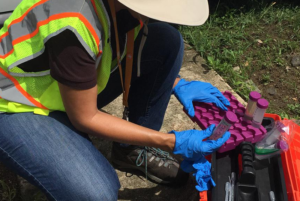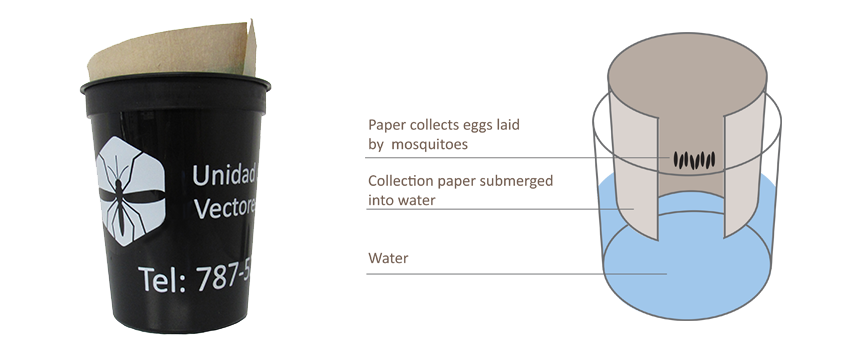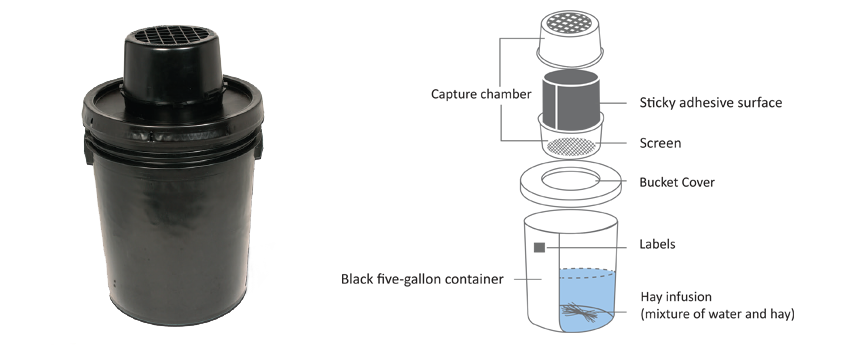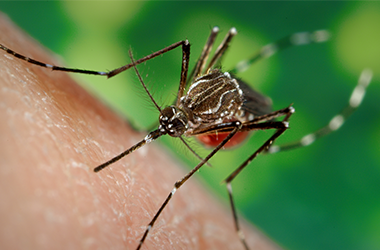MONITORING & SURVEILLANCE
Our laboratory monitors and surveys Aedes aegypti mosquitoes.
Surveillance
Mosquito ID
Insectary
Insecticide Resistance Monitoring
Surveillance
Traps are used to monitor the abundance of mosquitoes in specific locations.
The Monitoring and Surveillance team use traps to attract mosquitoes using water and hay infusions.
In some cases, adult mosquitoes and eggs trapped can be used to test viral presence and insecticide resistance, respectively.
The data collected will inform and support the mosquito control efforts conducted by the PRVCU and in partnership with collaborating agencies.
Our laboratory monitors and surveys Aedes aegypti mosquitoes.
Mosquito ID
Scientists have recorded around 40 different species of mosquitoes in Puerto Rico. Culex and Aedes species are the most common mosquitoes found on the Island.
Our laboratory technicians are trained to identify mosquitoes based on their physical characteristics. Technicians identify and count the number of mosquitoes present in the surveillance traps. This information is recorded using an in-house ArcGIS system that integrates the information collected from the field.
Insectary
Our insectary has been designed to provide the appropriate conditions for the growth and survival of Aedes aegypti mosquitoes in a laboratory setting. Laboratory technicians use the eggs collected by ovitraps in the field for mosquito rearing. During this process the collection paper containing the eggs is submerged in water to hatch the mosquito. After 7-10 days adult mosquitoes will emerge and can be used for insecticide resistance testing.
The larvae, pupae, and adult mosquitoes generated in the laboratory are also used for the educational activities conducted by the PRVCU.
Mosquitoes can develop resistance to commonly used insecticides
Insecticide Resistance Monitoring
The PRVCU is testing insecticides currently available for use in Puerto Rico to determine their effectiveness against Aedes aegypti mosquitoes. The information generated will be available to interested stakeholders to aid in their decision-making process about insecticide use.







